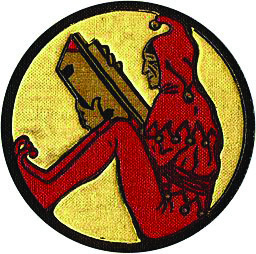 April 1 is a big day for mankind. It’s the one day a year where we get to strip ourselves of our manners, quit worrying about the well-being of others, and return to man’s state of nature: being dicks. Whether it’s the BBC making people believe spaghetti trees exist or Canada making Nunavut a territory, mankind has a strange sense of humour on this day. But where did it all come from? Who’s this April and who’s her fool?
April 1 is a big day for mankind. It’s the one day a year where we get to strip ourselves of our manners, quit worrying about the well-being of others, and return to man’s state of nature: being dicks. Whether it’s the BBC making people believe spaghetti trees exist or Canada making Nunavut a territory, mankind has a strange sense of humour on this day. But where did it all come from? Who’s this April and who’s her fool?
Some people believe April Fools’ may have come from confusion about when the Gregorian calendar celebrates its New Year’s Day. Others believe it may have its roots even before this.
In the Nun’s Priest Tale from Chaucer’s Canterbury Tale comes a fable about a vain rooster being tricked and caught in the jaws of a fox. The rooster needs to play on the fox’s own vanity to trick the beast into bragging about his catch in front of the other chickens. The fox does, opening its mouth in the process, allowing the rooster to escape. In some translations of the tale comes the line “Syn March bigan thritty dayes and two” (possibly referencing April 1). Between this date and what seems like trickery being one of the major aspects of this tale, it seems like we have a good candidate for the origin story, right?
Andrea Schutz, who has her PhD in medieval literature, thinks not. She doesn’t see the rooster’s tale as being about the merits of trickery.
“Really, the point is not so much the trickery as how do you use language appropriately.”
As for the proof of the “Syn March bigan thritty dayes and two” line, it might be false on two accounts. The line is more popularly written as “Since March be gone thirty days and two (May 2nd).” This makes a lot more sense to Schutz as it would set the events after Lent. The other problem with this line is the intention Chaucer used it for. He’s making fun of the intellectuals of his time.
When Chaucer made the nun’s priest count the days meticulously, he was mocking him.
“The joke he is making is ‘Look, so is this chicken. Not because he studied a whole lot of astrology, he just knows it because he’s a chicken,’” said Schutz.
•••
For Jean-Michel Bertin, a first year in Rigby Hall known for his pranks, April Fools is all about the trickery.
“For me, April Fools’ is an excuse to be funny and laugh and not have act mature at university,” said Bertin.
Bertin will flip your furniture upside down, hide food in your sock drawer, fill your room with tires. He’s even gone as far as to handcuff his friend’s hands and legs, threatened to put a sock in his mouth and stick him in the bathtub so he’d have to watch Bertin flip his room. Bertin thought it might be a tad over the line and decided to uncuff him.
“We were almost terrorizing him. He’s a good sport though,” said Bertin.
•••
The Gregorian calendar argument for April 1 becoming All Fools’ Day seems to hold more weight. Gregory the Great saw that the calendar of his time was two months short and added them in. Although his new calendar was an improvement, it still needed more reform until we got the 365 and a quarter days we know and love today.
Neither account really convinces Schutz though.
“April Fools’, I’m willing to bet, is connected to some obscure Roman feast day people have forgotten about.”
Schutz thinks April Fools’ may have more to do with general spring fever nonsense than any medieval tradition.
“That’s when the roads are finally clear. That’s the earliest you can get out without being drowned by some flood.”
